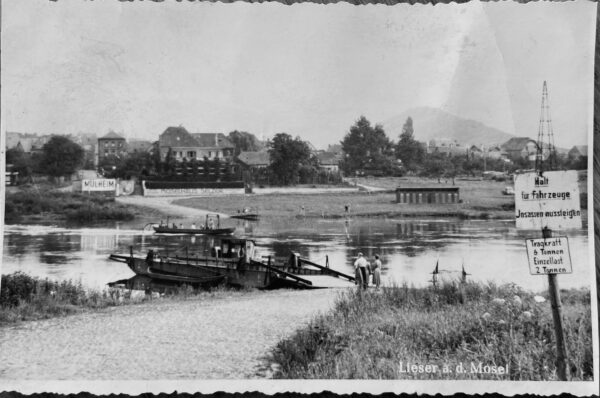The settlement history of Lieser goes back at least to Roman times. This is evidenced by archaeological finds of Roman water pipes in the Paulsberg, surface finds of Roman bricks and the discovery of a Roman wine press at the end of the village in the direction of Bernkastel. This was discovered in the course of road construction work and built over again after an emergency excavation.
The original place name Lesura, or Lisura, and the name of the village “Zevenich” even suggest that Lieser was already settled in Celtic-Germanic times.
Lisura was first mentioned in a document in 817.
Lieser was conveniently located on the imperial road from Trier to Mainz and probably always had a ford on the Moselle or a Moselle ferry.
In the early 16th century Lieser became a postal station on the postal line from Brussels to Italy. The old post office still bears witness to this today.
In the course of the French Revolution, the Mairie de Lieser was created under Napoleon.
After the Congress of Vienna, Lieser, like the entire Rhineland, became Prussian.
Lieser experienced an early zenith in the second half of the 19th century, when the family of Puricelli-Schorlemer built what is now Lieser Castle, first as a hunting lodge and by the end of the century expanded it into the present-day estate. As the family was friends with Kaiser Wilhelm II, the latter visited Lieser in 1906, 1911 and 1913.
Lieser had been connected to the railway network since 1883 and had its own railway station. In 1988, the line and station were closed down.
The ferry service in Lieser was discontinued in 1968 after the bridge to Mühlheim was completed.

Since 2002, Lieser has been protected from the annual Moselle floods by a flood protection dam.

